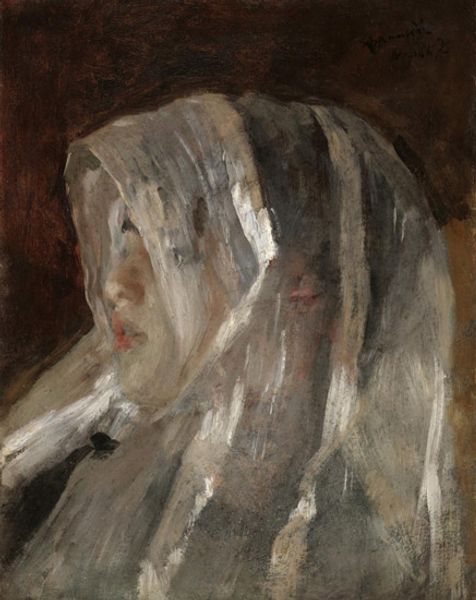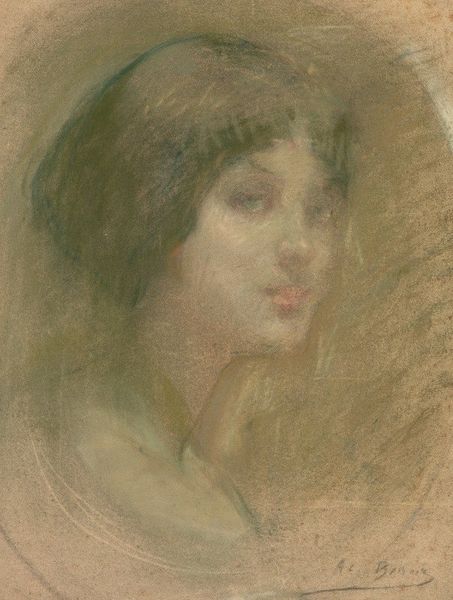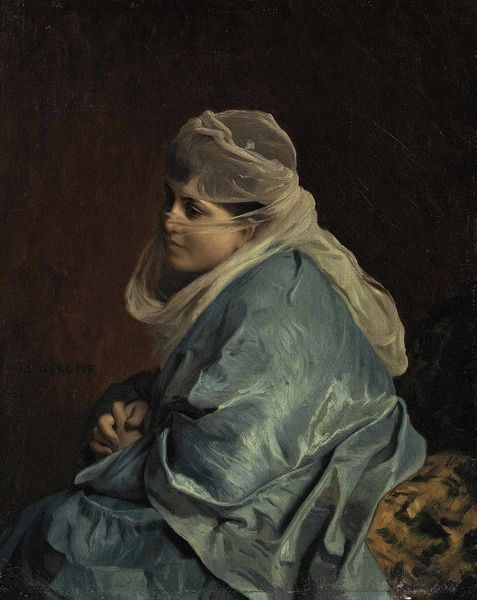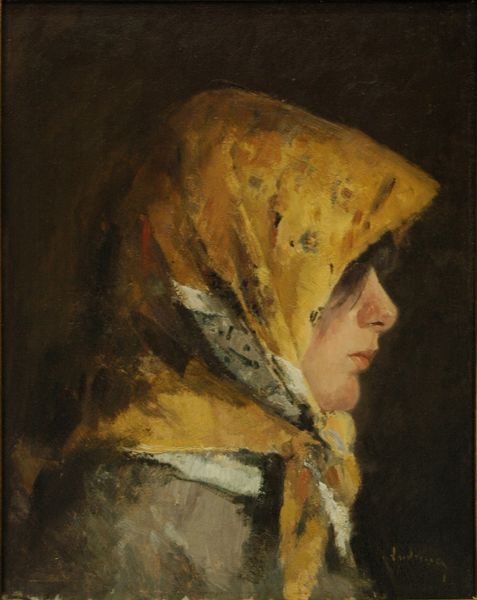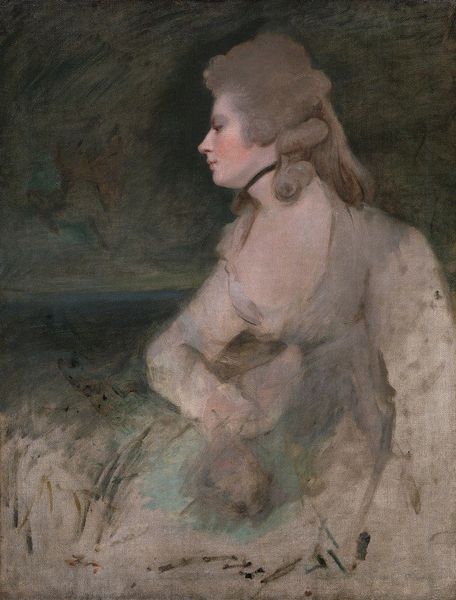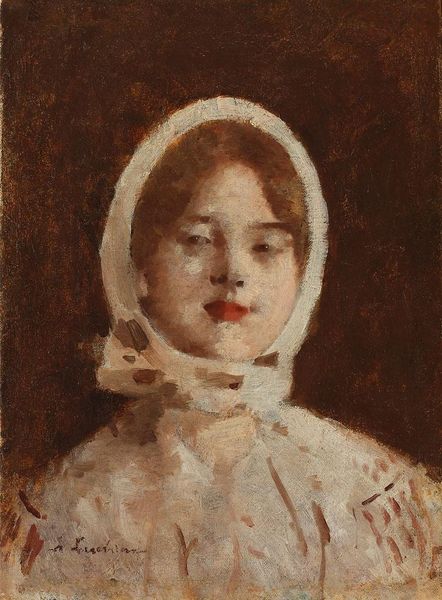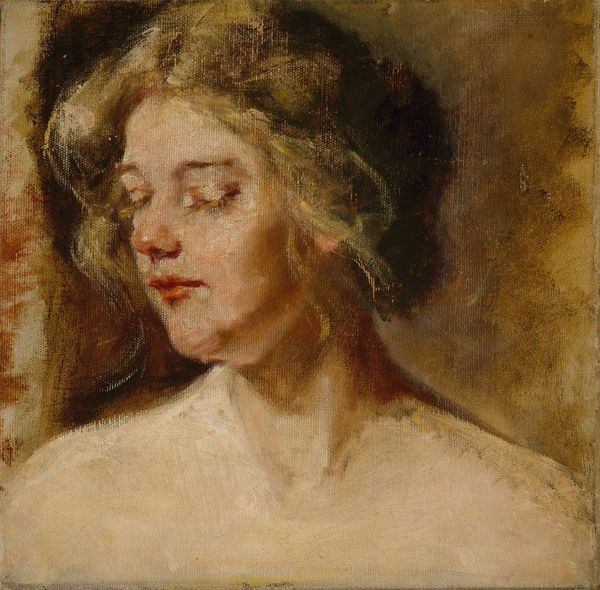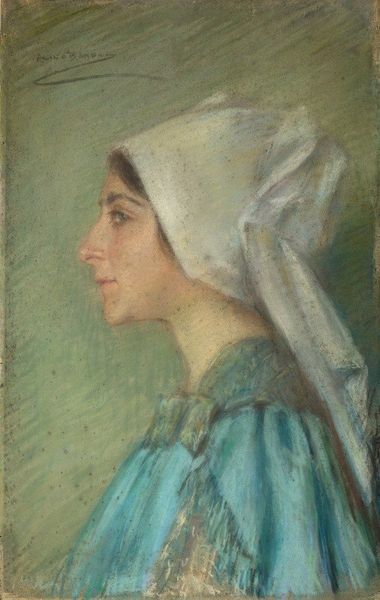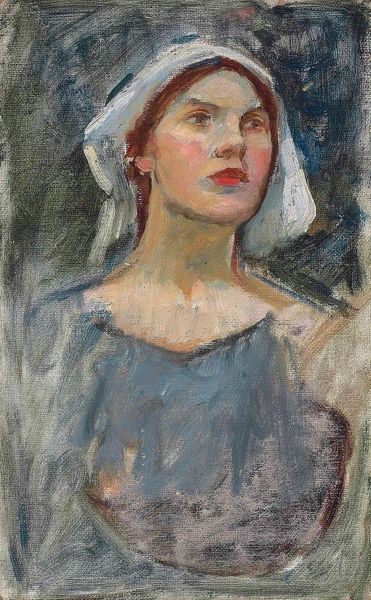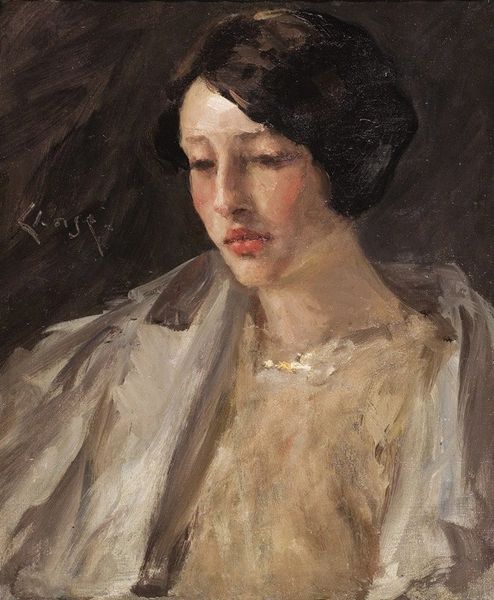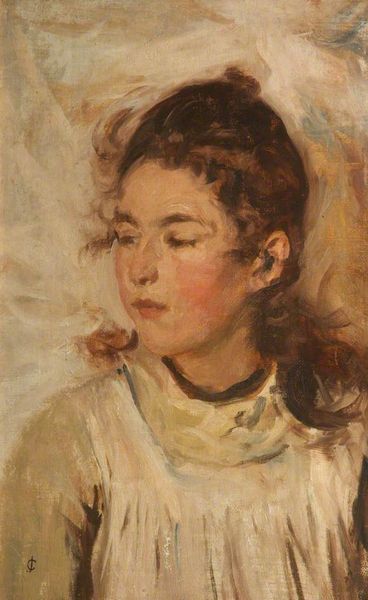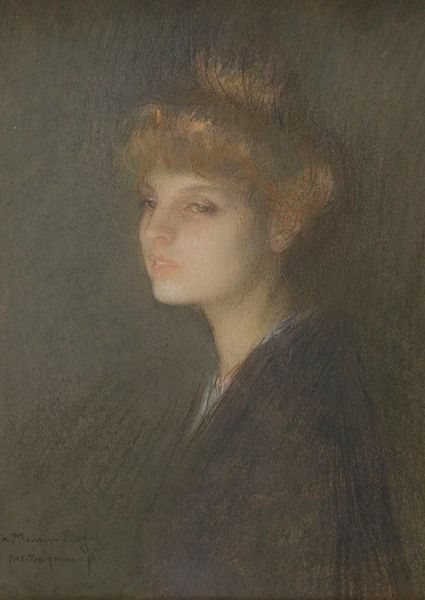
oil-paint, impasto
#
portrait
#
figurative
#
oil-paint
#
charcoal drawing
#
oil painting
#
impasto
#
portrait reference
#
portrait drawing
#
portrait art
#
realism
Copyright: Public Domain: Artvee
Curator: This is James Jebusa Shannon's 'Study for 'Madonna and Child'', dating from around 1892. It's rendered in oil paint, showcasing Shannon's talent for portraiture. Editor: My immediate response is one of hushed reverence. The subdued palette and the downward gaze...it evokes a strong sense of quiet contemplation. There’s something incredibly vulnerable and intimate about it. Curator: Absolutely. The artistic and social conventions of the late 19th century certainly shaped how women were depicted. Considering this as a study for a Madonna, do you see traditional religious symbols, or does Shannon offer a more secular interpretation? Editor: That’s a fascinating question. While the title points towards a religious subject, Shannon seems more focused on the human element. The soft impasto, particularly around the face, directs our attention to her expression. It lacks the overt symbolism we often see in religious iconography. I’d argue that he's universalizing motherhood rather than adhering to strict religious doctrine. Curator: The choice of oil paint lends itself to the exploration of texture and light. This almost hazy, dreamlike quality adds to the overall sense of intimacy and vulnerability you mentioned. How might audiences at the time have responded to this particular depiction of motherhood? Editor: It depends. The Victorian era had rigid expectations for women. This portrayal is softer and less idealized. A contemporary audience may have appreciated it precisely because it felt real and accessible, contrasting with the often-stiff formality of academic portraits. However, some may have seen it as a departure from the traditional, elevated image of the Virgin Mary. It's a far cry from the established Neoclassical aesthetics which prized idealized and polished finishes. Curator: Interesting points! What I take from it is that Shannon presents viewers with both a universally familiar maternal image, and invites the viewer to experience a direct psychological encounter through the careful brushwork. Editor: I completely agree. It challenges the viewer to think past prescribed archetypes. What lingers is the intimate impression of universal motherliness rather than merely a representation.
Comments
No comments
Be the first to comment and join the conversation on the ultimate creative platform.

